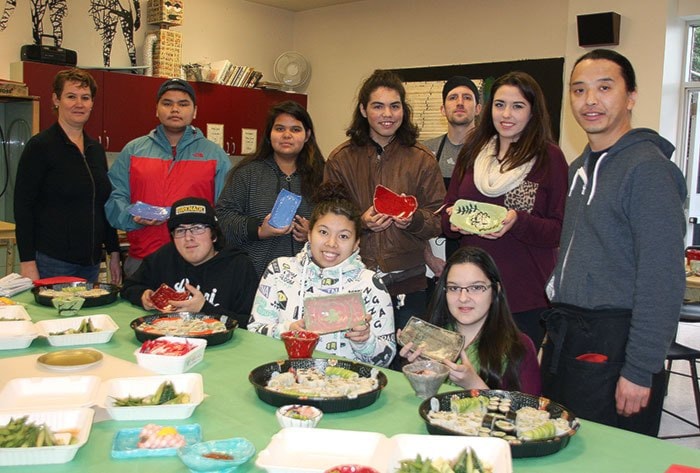Charles Hays Secondary art teacher Tasha Parker gave her Grades 9/10 and Grades 11/12 classes lessons to remember.
Throughout the term, students learned about early art movements dating back to the Stone Age.
“We’ve been looking at the timeline of art history. We started with cave painting, we did First Nations art and Japanese tea ceremonies,” explained Parker.
Some of the art movements inspired Parker’s class projects, such as carving for a Remembrance Day project and moulding clay dishes to be used in a Japanese tea ceremony.
Collaborating with teacher Dianne Rabel, Parker took students on field trips to learn Prince Rupert’s role in wars and identify North Coast Aboriginal soldiers who died in combat but haven’t been formally recognized.
In November, First Nation artist Jason Watts was brought into classes to lead the carving unit, guiding students in carving wooden poppies to honour Aboriginal soldiers.
Watts also helped students carve individual First Nations masks, and worked one-on-one with students to create a large mask they all had a part in creating.
The “Human Mask” is displayed in Charles Hays’ front entrance, along with some of the carved poppies representing Aboriginal soldiers, acknowledging the struggles and perseverance of the soldiers and honouring their sacrifices.
Art classes held First Nations-styled ceremonies to celebrate the display, with Lax Kw’alaams hereditary chief Alex Campbell (Sm’ooygit Gitxoon), district principal of Aboriginal Education Roberta Edzerza and Sm’algyax teacher Donna McNeil-Clark making speeches.
Finishing the Human Mask was a lengthy task, so as Watts chipped away on the piece with students, others moved on to the clay unit.
Parker had students mould tea bowls and teapots to represent the art of Japanese tea ceremonies.
Because Japanese tea ceremonies traditionally involve food, Parker had students mould clay into sushi plates and soy sauce dishes, and through funding from the school students got a catered lunch from Fukasaku of Prince Rupert.
“I made the food for sushi-beginners: lots of vegetarian stuff, cooked stuff. But I wanted to show them what else is available, so I had some Sashimi and raw stuff,” said Dai Fukasaku, owner of Fukasaku.
Fukasaku served some of the food on students’ platters.
“They were beautiful. I smiled while I was decorating and making platters,” he said.
